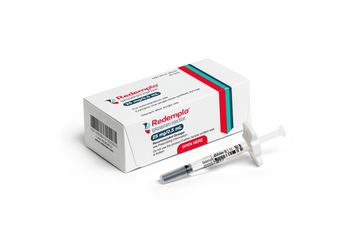
FDA Grants Priority Review to Sibeprenlimab for the Kidney Disease IgAN
Sibeprenlimab would be offered in a prefilled syringe for subcutaneous injection. The PDUFA target action date is Nov. 28, 2025.
The FDA has accepted for priority review the biologics license application (BLA) for sibeprenlimab to treat patients with immunoglobulin A nephropathy (IgAN), a chronic kidney disease. Regulators have granted the BLA priority review and given sibeprenlimab a Prescription Drug User Fee Act (PDUFA) target action date of Nov. 28, 2025.
If approved, sibeprenlimab would be offered as a prefilled syringe for subcutaneous injection every four weeks, intended for at-home self-administration.
IgAN is a progressive autoimmune condition that can lead to end-stage kidney disease. A
Developed by Visterra, an affiliate of Otsuka Pharmaceutical, sibeprenlimab is a monoclonal antibody that inhibits the activity of APRIL (A PRoliferation-Inducing Ligand), a cytokine in the tumor necrosis factor family. By binding and inhibiting APRIL, sibeprenlimab may help reduce the amount of immunoglobulin A (IgA) and Gd-IgA1 levels, which helps to decrease immune complex creation.
“Sibeprenlimab’s unique mechanism of action inhibits the activity of APRIL and addresses an IgA-specific driver of kidney loss in IgA nephropathy. APRIL is a cytokine that plays a key role in the pathogenesis of IgA nephropathy,” John Kraus, M.D., Ph.D., executive vice president and chief medical officer, Otsuka Pharmaceutical Development & Commercialization, said in a
The BLA is supported by the phase 3 VISIONARY clinical trial, which met its primary endpoint at the prespecified interim analysis, and results from the phase 2 ENVISION clinical trial. In the phase 3 trial, sibeprenlimab demonstrated a statistically significant and clinically meaningful reduction in 24-hour urine protein-to-creatine ratio (uPCR) after nine months of treatment compared with placebo.
The VISIONARY study is a placebo-controlled trial that recruited about 530 adult patients with IgA nephropathy who were receiving standard-of-care therapy (an ACE inhibitor or ARB +/- SGLT2 inhibitor). The trial was designed to evaluate the efficacy and safety of sibeprenlimab 400 mg administered subcutaneously every four weeks compared with placebo.
An
The positive results from the phase 2 ENVISION trial led to a breakthrough designation from the FDA. These results were
The ENVISION trial found that in patients with IgA nephropathy, 12 months of treatment with sibeprenlimab resulted in a significantly greater decrease in proteinuria than placebo.
Newsletter
Get the latest industry news, event updates, and more from Managed healthcare Executive.






















































